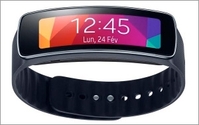
Consumers should not be surprised to be getting — or giving — a wearable fitness tracker this year.
According to The NPD Group’s latest
“Connected Intelligence: Consumers and Wearables” report, awareness of wearable fitness devices has more than doubled in less than a year, moving from 30% last November to 70% at the end
of July. The growth in awareness and availability of these trackers should make these activity trackers a hot item in the holiday season, says Eddie Hold, vice president of Connected Intelligence at
The NPD Group.
“Usually, you’d consider these devices to be somewhat niche,” Hold tells Marketing Daily. “In one year, they’ve gone from
low awareness to extremely high awareness.”
advertisement
advertisement
The rise in awareness has come as ownership of fitness trackers has doubled to 10% of the population. That presence has helped
increase awareness, Hold says, and increased the use of stand-alone fitness apps on smartphones. According to NPD, a quarter of U.S. consumers say they have used a fitness app on their
smartphones.
“[Smartphone apps are] an interesting idea, and it allows people to try them out,” Hold says. “But once they try them out, they quickly
understand it’s not the ideal devices for fitness tracking.”
In fact, the biggest issue facing these wearables is the fact that 40% of activity tracker owners no longer
wear their devices. That statistic suggests there’s a disconnect between what consumers want from these trackers and the jobs they actually perform.
“People wear
them and they realize it’s not giving them the information they’re looking for,” Hold says, noting that most only measure steps or have some other limited functionality. “The
next generation of devices will be stickier and longer-lasting with consumers.”